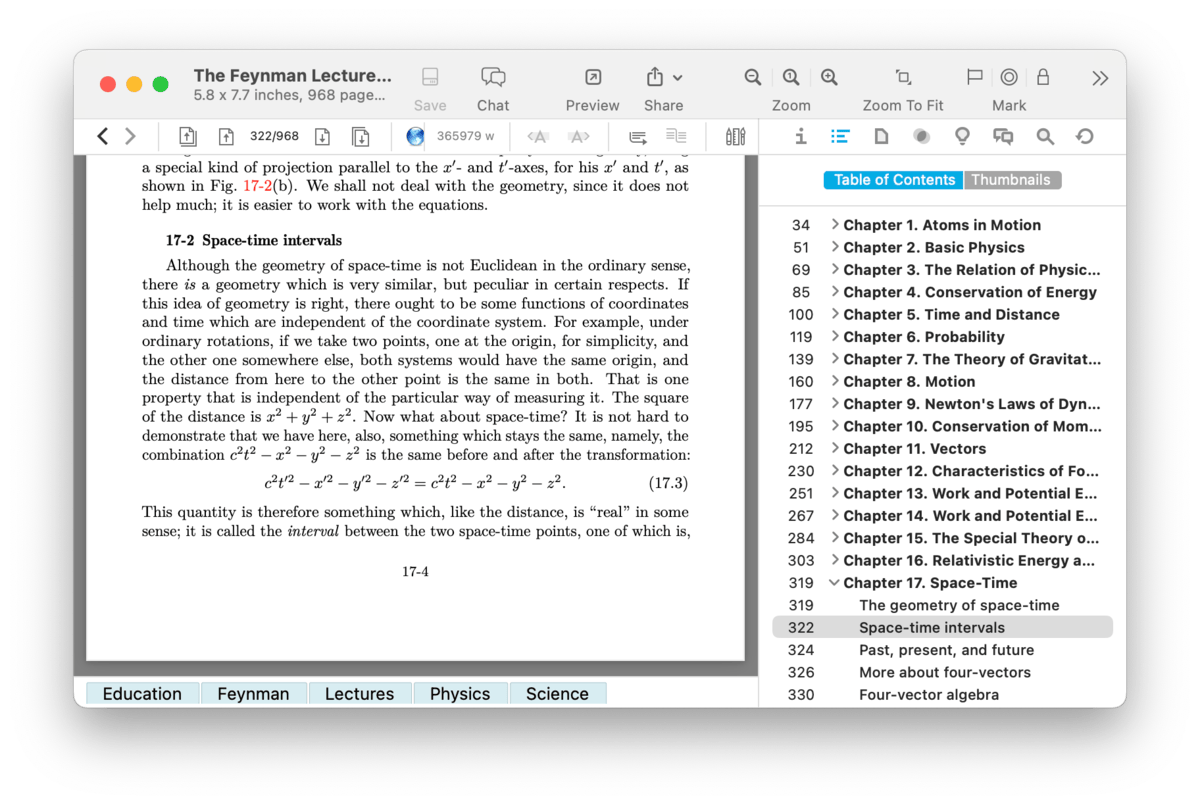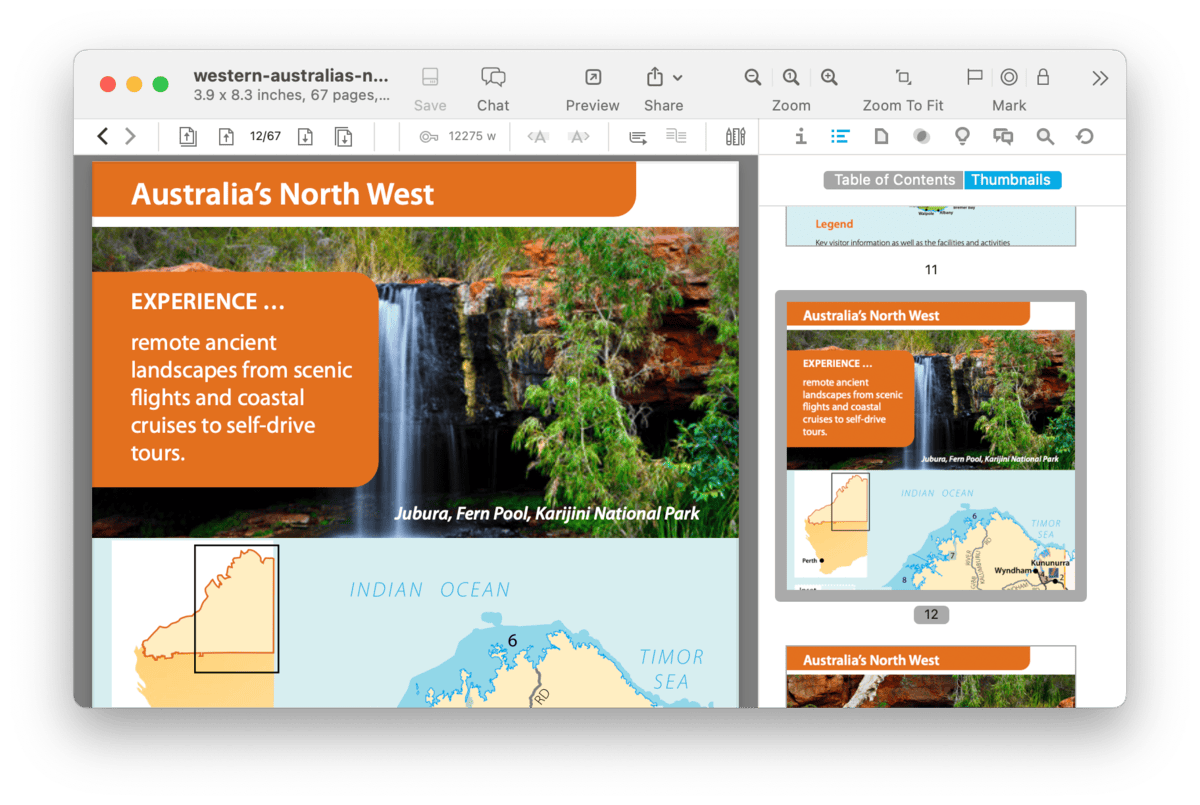|

Navigating documents, like PDFs, can sometimes be difficult when you are just scrolling page after page, paragraph after paragraph. Fortunately, the Content Inspector provides two views that make it easier to move through your documents: a Table of Contents for various types and Thumbnails for PDF documents.
Table of Contents
The Table of Contents shows an outline view of PDFs with an table of contents, chapters in .epub files, section headings of Markdown documents, or sections in rich text created with emboldened or underlined lines. Browse the outline as you would in outlining applications, expanding and collapsing sections to access the desired pages. This inspector also supports selecting multiple pages, which could be useful if you need to copy page links via the context menu.
For even quicker navigation, the table of contents can be navigated via keyboard, using the arrow keys to move around. Change pages with up and down arrows. Expand and collapse a section with the left and right arrows or hold the ⌥ Option key to fully expand or collapse sections.
When used with Markdown, rich text, and PDF documents, you can drag and drop sections and it will rearrange the text in the document.
Context Menu: The context menu commands available in this inspector depend on the type of document:
PDFs:
-

Show/Hide Page Number: Toggles the page number of each section on or off.
-

Select/Deselect All: Select or deselect all the sections.
-

Rename: Change the name of a section in a PDF outline. This change is only for your reference. It doesn't change the text in the document.
-

Delete: Removes a section from a PDF outline. This does not remove content or pages from the document.
PDFs and supported types:
Thumbnails

Used only with PDF documents, the Thumbnails view show each page in a list of thumbnails. This allows for a more visual approach to moving through your document. By default, the thumbnails are shown in a single column but they can be displayed in multiple rows if the sidebar is widened. This view allows for actions like these:
-

Jump to or select any page by clicking on it. Extend a range of selected pages by holding the ⇧Shift key to select consecutive pages or hold the ⌃ Control key to select non-consecutive pages.
-

To quickly remove unwanted pages, press the ⌫ Backspace key.
-

If you want to reorder some pages, select a page then drag and drop it within the thumbnails. A blue line will appear at the place the pages will be inserted. This will also work if you drag thumbnails from one PDF to another.
-

Drag selected pages to another location in your database and DEVONthink will create a new PDF containing only those pages.
Context Menu: You also have several options available in the context menu when you Control-click in the Thumbnails view:
-

Cut/Copy: Cut or copy the selected page(s) to the clipboard.
-

Copy Page Link: Copies the item link with a reference to the current page.
-

Add to Reading List: Adds a reference to the current page to the
Reading List.
-

Add to Table of Contents: Adds an outline item to the table of contents.
-

Paste: Pastes a copied PDF page into a document.
-

Split Document: Splits the document at the current page. A new document is created from the preceding pages and removed from the current document. This item is unavailable when the first page of the document is selected. Also, note this action cannot be undone.
-

Reverse Page Order: Reverses the page order of the document.
-

Insert Blank Page: Insert a new blank page.
-

Delete Selected Page(s): Delete the selected page(s).
-

Rotate Left/Right: Rotate the selected page(s) left or right.
-

Select/Deselect All: Select or deselect all pages in the document.
PDF Bookmarks: The Add to Table of Contents command mentioned above allows you to add bookmarks to specific pages. If there is no table of contents, one will be created. With the option of reorganizing and renaming items, you can create a very custom table of contents specifically for you.
|

